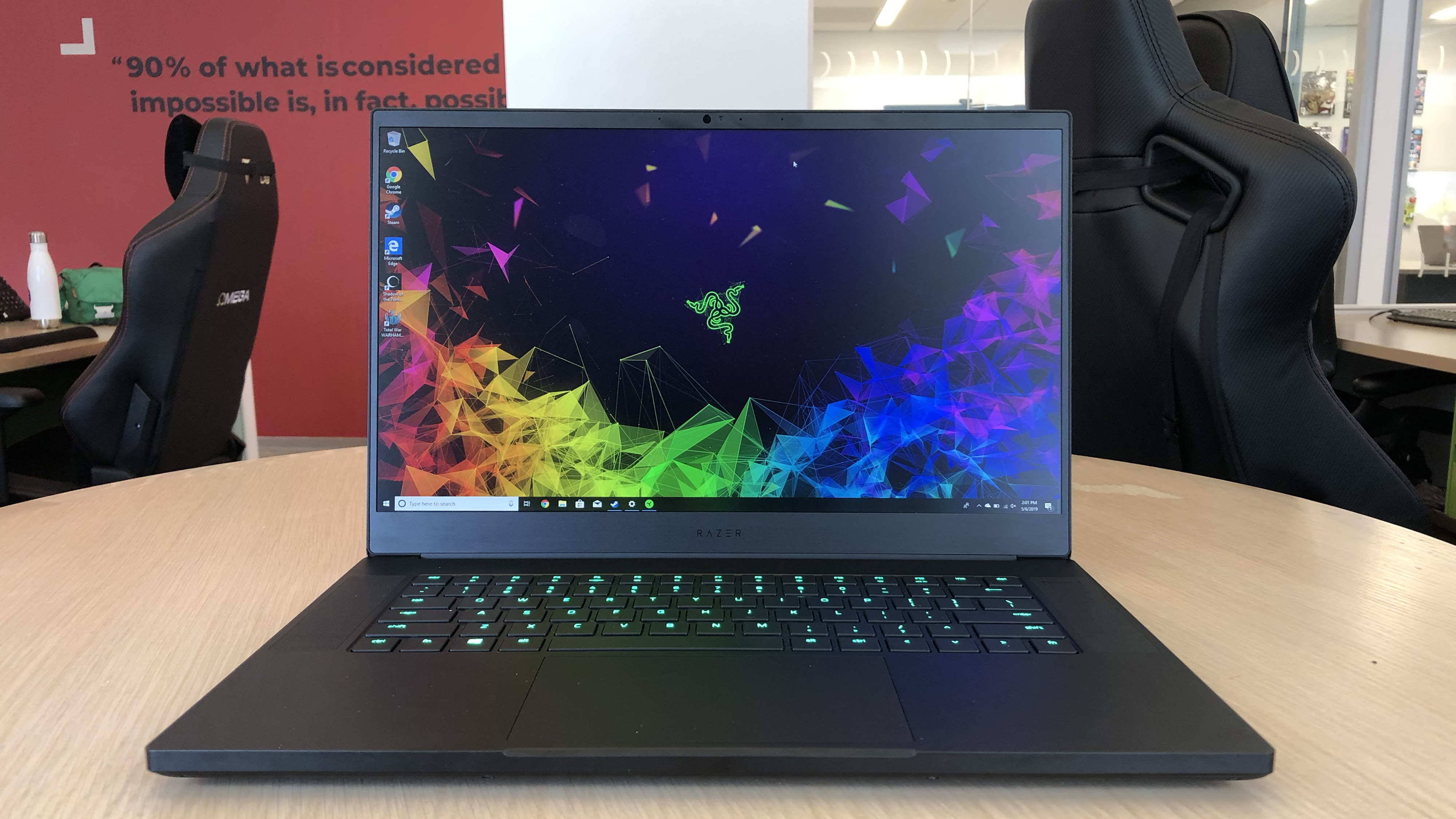Our Verdict
Less than a year removed from its initial debut, the Razer Blade 15 Advanced Model brings ray tracing, higher memory capacity and a lengthy battery life to one of the best gaming laptops ever made.
For
- Unparalleled build quality
- Wide range of GPU/CPU options
- Long battery life
Against
- Costs more for the same
- No longer thinnest or lightest
PC Gamer's got your back
When the original Razer Blade 15 touched down last year, I was starstruck. With its CNC-milled aluminum chassis, ultra-thin bezels and deeply satisfying keyboard and touchpad, finally, a powerful Windows laptop would rival, and perhaps even usurp the MacBook Pro for the creator laptop throne.
Price: $2,999.99
Processor: Intel Core i7-8750H
Graphics: Nvidia GeForce RTX 2080 Max-Q 8GB
Memory: 16GB DDR4-2,667MHz
Display: 15.6-inch IPS 144Hz
Resolution: 1920x1080
Storage: 512GB SSD
Battery: 80Wh
Connectivity: 1 x Thunderbolt 3 (USB-C), 3 x USB Type-A 3.1 Gen 1, Mini-DisplayPort 1.4, HDMI 2.0
OS: Windows 10 Home
Dimensions: 0.78 x 13.98 x 9.25 inches
Weight: 4.63 pounds
Warranty: One year
Not only did it turn out to be the best Razer laptop for gaming, but it also sits among the best gaming laptops of all time. More ambitiously, its pricing suggested it could pull off that lofty feat while also replacing your trusty desktop PC. I mean, why not? It had an optional 4K touchscreen, a state of the art six-core processor and up to 512GB of blistering NVMe SSD storage. What, exactly, impeded its value as a suitable desktop replacement?
Oh, right. Unlike a full-blown PC tower, Razer imposed a run-of-the-mill GTX 1070 ceiling on the Blade 15, further curtailed by the limitations of Nvidia's Max-Q design initiative. At the time, making the most of a 4K 60Hz display would require at least a stifled GTX 1080. Alternatively, you could buy the FHD (1,920 x 1,080) high refresh rate model (144Hz), though reaching that 144fps threshold with a softened GTX 1070 was a pipe dream in most triple-A games.
If subpar graphics were its biggest shortcoming, the Razer Blade 15 was an easy fix. Instead of completely overhauling a near-perfect design, the Californian hardware maker could simply incorporate stronger chips into its existing, best-in-class chassis.
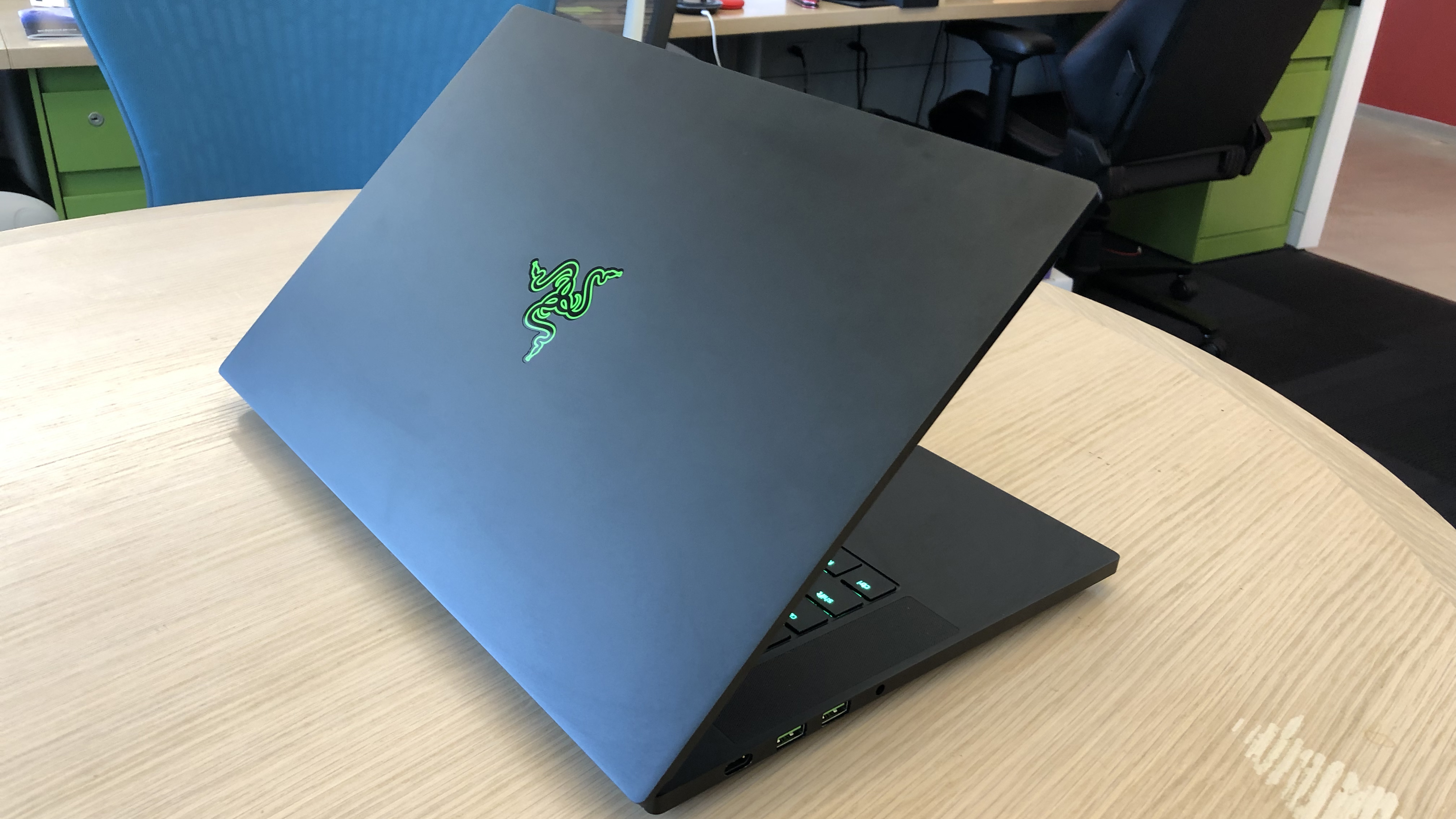
Enter the Razer Blade 15 Advanced Model, an inconspicuous and predominantly internal upgrade to the self-proclaimed "world's smallest 15.6-inch gaming laptop" of yesteryear. Now capable of producing ray traced graphics in supported games like Battlefield 5 and Metro Exodus, the Advanced Model is iterative, yet more compelling than that which came before it. However, for the average consumer, the new branding is muddled, dissuasive and just plain confusing. Rather than supplanting the original Razer Blade 15, the Advanced Model is joined by a cheaper Razer Blade 15 Base Model, which trades a thinner frame and per-key RGB lighting for Gigabit Ethernet and higher capacity hard drive storage.
However, when you go to configure your own built-to-order machine on Razer's website, these two ostensibly disparate systems get conflated. It seems that the Base Model comprises everything under the GTX 1060 Max-Q and RTX 2060 umbrellas, while the Advanced Model is available in a plethora of Max-Q-ified RTX 2070 and RTX 2080 configurations. Because there are 10 in total, I'll avoid delving into the nitty gritty of each one.
All you really need to know is this: it's available in both Black and Mercury White outfits, some models leverage Intel's latest 9th gen mobile processors while others—like my review unit—don't and only the most expensive $3,299.99 variant wields an OLED panel.
Keep up to date with the most important stories and the best deals, as picked by the PC Gamer team.
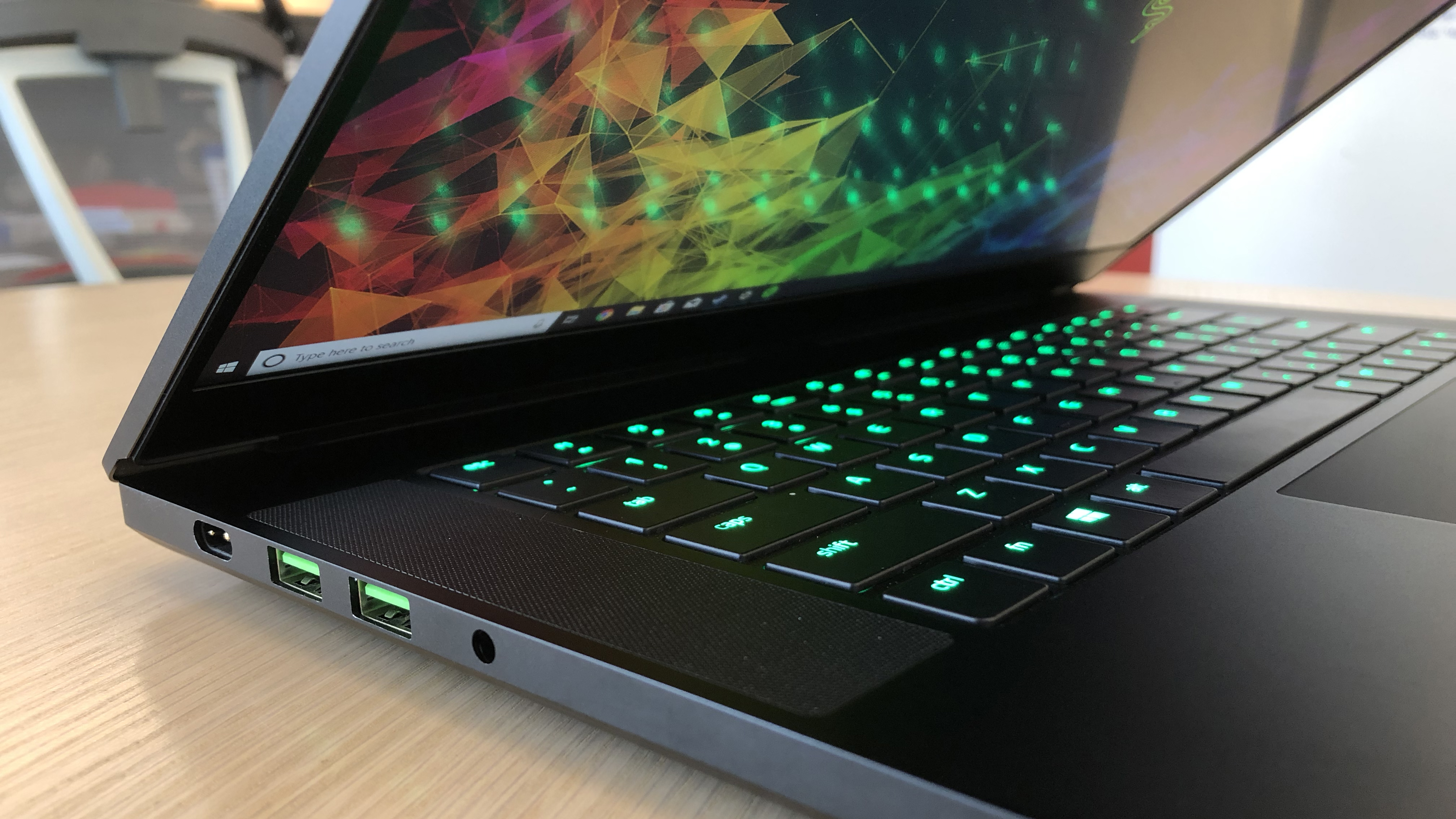
In other words, Razer has foregone the industry trend of discontinuing the last gen version once its current gen successor is released. Priced at $2,999.99, the model I'm reviewing here touts an RTX 2080, a full HD 144Hz IPS screen and 512GB of PCIe-based NVMe SSD storage. For the sake of consistency, the Blade 15 still uses 16GB of RAM in all its many forms. That said, the Advanced Model brings dual-channel expandability up to 64GB. For $500 less, you could settle for the similarly specced Acer Predator Triton 500 and benefit from a longer, two-year warranty. Admittedly, you'd also be missing out.
Whereas Acer cut corners to achieve the Triton 500's still-expensive, albeit less exorbitant price tag, Razer managed to squeeze the same specs into an overall superior product. As I mentioned before, every Blade 15 shell was artfully constructed using nothing but a rotary cutter and a single block of aluminum. It's then anodized with either a Black or Mercury White coating.
On the lid is a backlit triple-headed snake logo, and in classic Razer fashion, the USB ports are tinted green for cosmetic effect. All in all, it looks and feels the same as the standard Razer Blade 15 which preceded it, save for its dimensions. Measuring 0.78 inches thick, its profile is a negligible amount fatter than before.
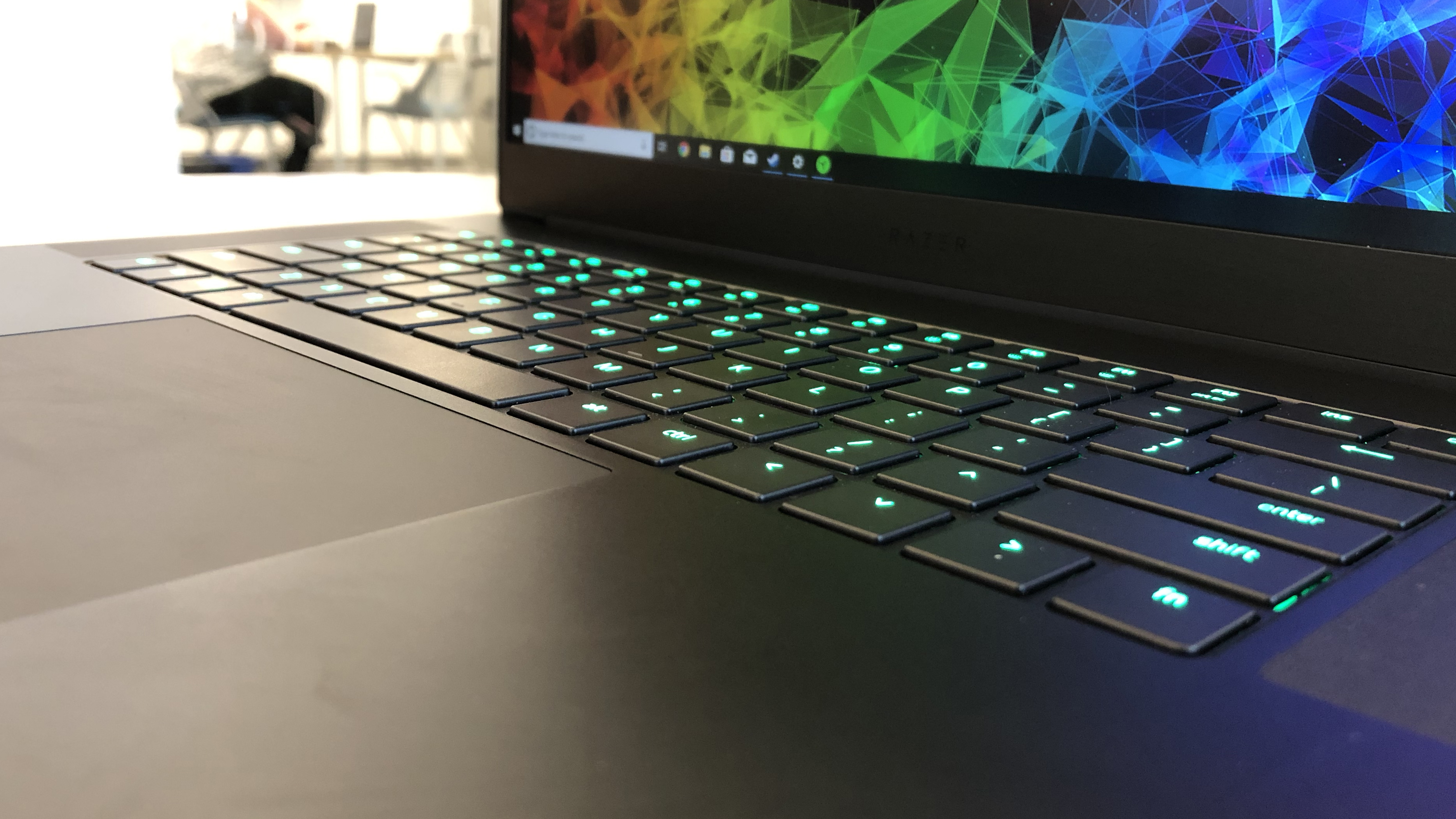
Be that as it may, it retains the same weight as the first edition Razer Blade 15. Or at least my unit does. Step it up to the top-end model and you're looking at a 4 percent heft increase. By no means is the Razer Blade 15 the lightest or the thinnest RTX notebook, as the aforementioned Acer Triton 500 measures 0.7 inches thick and weighs 4.41 pounds. Meanwhile, the MSI GS65 Stealth Thin, as its name suggests, is the thinnest of them all at 0.69 inches, and it weighs 4.19 pounds.
Its keyboard is the same, too, so if you didn't like it before, the Advanced Model rendition isn't going to change your mind. Fortunately, even if it is shallower than the Triton 500 keyboard, 1mm of travel is a huge step up from the Butterfly keys I know and hate. In classic form, the touchpad on the Razer Blade 15 is quite large, not to mention soft to the touch. In fact, it's the closest thing to Apple's Force Touch trackpad I've experienced on a Windows lappy. While I still prefer my MacBook Air for basic navigational tasks on the go, pressing down on the Razer Blade 15 touchpad doesn't result in a harsh clicking sound. Rather, it's somewhat muted and generally more comfortable than that of any clamshell gaming rig I've used.
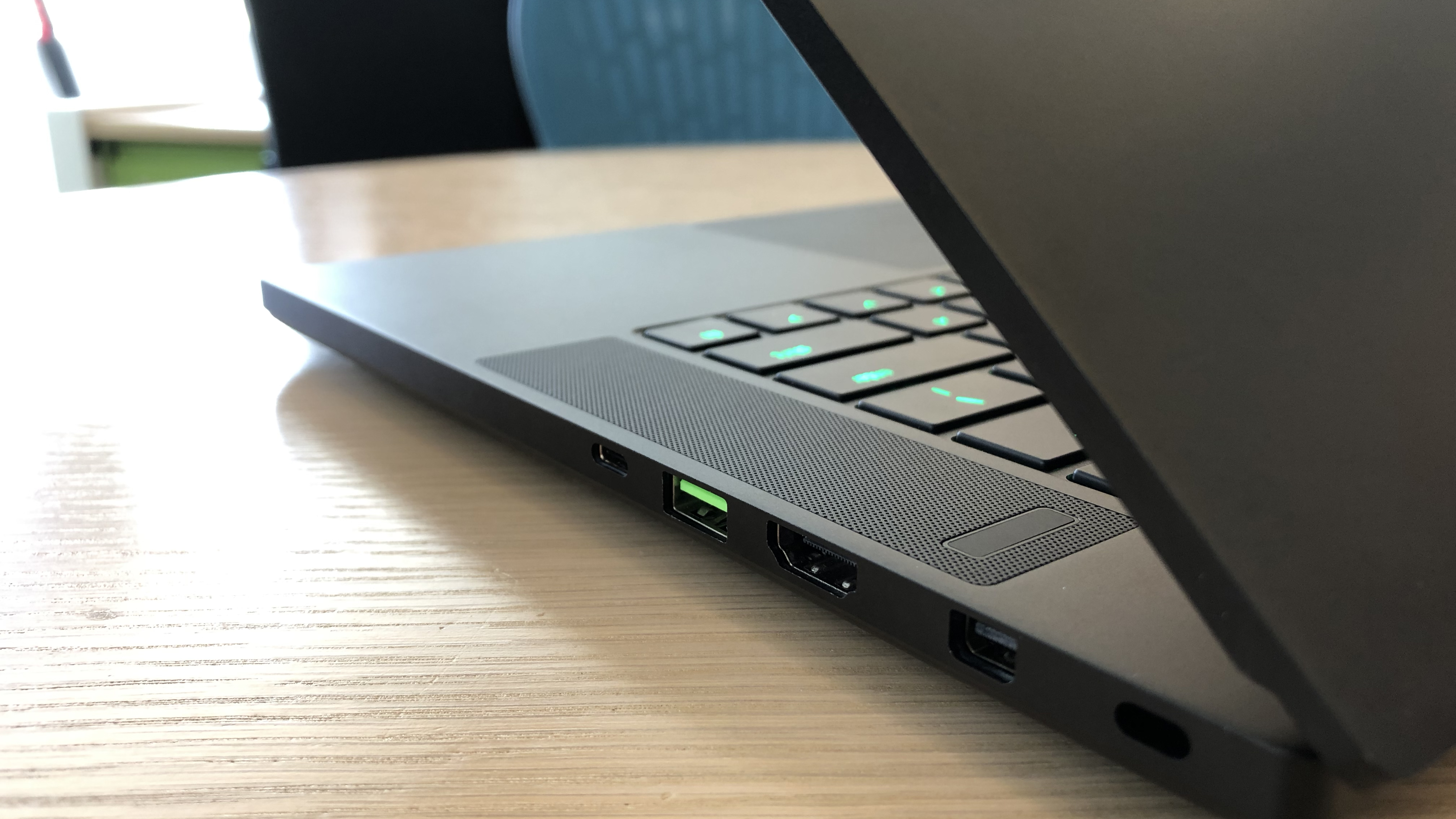
On the subject of muted comfort, the speakers on the Razer Blade 15 still aren't as loud as I would have preferred. As they were on the Razer Blade Stealth 13 I reviewed before it, they are crisp and captivating, benefitting from an included dose of Dolby Atmos, which normally costs $15 to enable in Windows 10. When I used it to play Mortal Kombat 11, every gut-slushing impalement could be heard in pristine virtualized surround sound. Had it let me crank the volume knob a few degrees higher, I'd walk away complaint-free.
Performance and verdict: Should I buy the Razer Blade 15 Advanced Model (2019)?
When perusing the various gaming laptop offerings, one aspect stands out above all else: performance. Especially since you're in the market for an RTX-equipped rig with a 144Hz screen, you want to know if you can run the latest in triple-A games at the highest settings, absent the frame rate dips you would otherwise experience with one of the cheaper, budget laptops for gaming. I get it, before shelling out three grand for top-of-the-line machinery, you want to make sure you're not skimping where it counts.
In truth, though it does sport a much more premium look and feel than most of its rivals, the Razer Blade 15 Advanced Model performed about the same as the rest in benchmarking suite. Considering it packs the same internal components as many of the other gaming laptops I've reviewed, this comes as no surprise, really. In the real-time ray traced Metro Exodus test, for instance, the Blade 15 managed an average frame rate of 51fps. You can compare that to the Acer Predator Triton 500, which did slightly better at 56fps, but it's ultimately a trivial difference that falls within the margin of error. The real test of strength is how much better it performs than the previous Razer Blade 15.
Cinebench R15: 390cb (single-core); 1,651cb (multi-core)
CrystalDiskMark Q32 Sequential (Read): 3,250.1MB/s
CrystalDiskMark Q32 Sequential (Write): 1,953.0MB/s
PCMark 10: 5,057 points
Tom Clancy's The Division 2: 75fps
Total War: Warhammer II: 79fps
Tom Clancy's Ghost Recon: Wildlands: 53fps
Metro Exodus: 51fps
3DMark Fire Strike: 15,889 points
Battery Life: 5 hours and 1 minute
Whereas its precursor achieved frame rates of 59fps and 44fps in Ghost Recon: Wildlands and Total War: Warhammer II, respectively, the Razer Blade 15 Advanced Model produced scores of 53fps and 78fps in the same games. You might be wondering why performance didn't improve much from one model to the next in Wildlands. But Ubisoft's open-world tactical shooter is notoriously CPU intensive. TWW2, on the other hand, is more taxing on graphics. Seeing as the Razer Blade 15 we tested last year makes use of the same i7-8750H as the 2019 model in question, the former's homogeneity checks out. In every other test, the Razer Blade 15 Advanced Model saw marked gains.
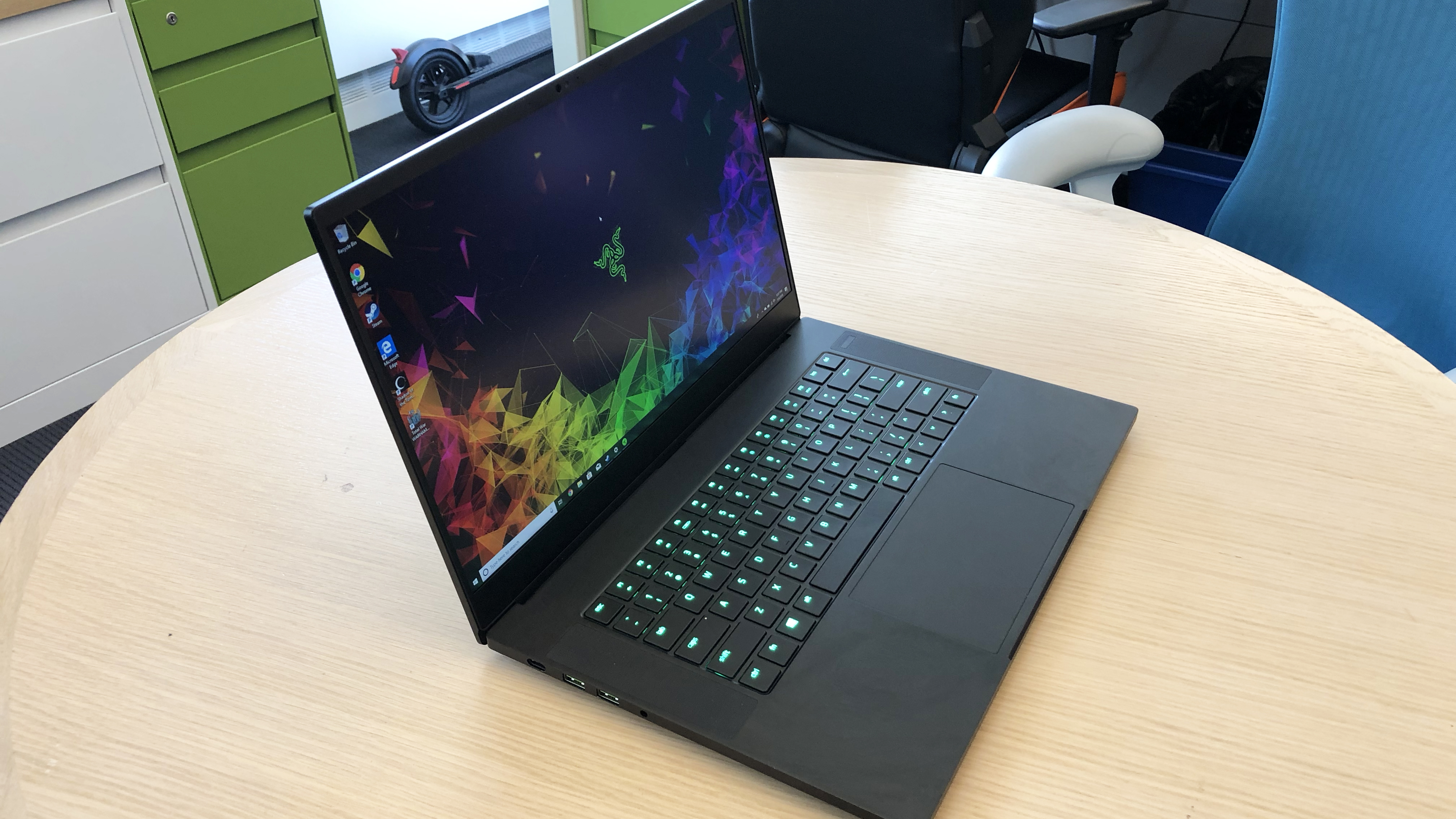
Most impressive to me was the Advanced Model's unconventionally impressive battery life. Having been underwhelmed by the recent batch of gaming laptops I've reviewed (see: Acer Predator Triton 500—2 hours 57 minutes; Lenovo Legion Y740—2 hours 52 minutes; MSI GS75 Stealth—4 hours and 25 minutes), it was startling to see the Razer Blade 15 Advanced Model die after 5 hours and 1 minute. I even went as far as running it again to make sure the first time wasn't a fluke. It wasn't. Despite trumpeting power-hungry entrails, the Razer Blade 15 Advanced Model showcases a lengthy battery life, unusual for a gaming laptop in its class.
I have a particular affinity for performance-driven machines graced with clean, svelte industrial designs. When you think about it, it just makes sense. Why pay for two different PCs—one for productivity and one for gaming—when both can be consolidated into a single device that does it all? I'm sick of buying MacBooks because Apple is the only one doing trackpads well. And I'm equally tired of maintaining a desktop tower that hardly fits in my apartment.
The Razer Blade Stealth Advanced Model wouldn't solve all of my problems, as it doesn't run macOS and it's by no means upgradeable a la the Alienware Area-51m. Yet it does entertain the idea of a stylish, thin and light notebook competent enough to replace my gaming desktop as well as my existing work weapon of choice. And that its battery life doesn't suck makes it all the more formidable.
Less than a year removed from its initial debut, the Razer Blade 15 Advanced Model brings ray tracing, higher memory capacity and a lengthy battery life to one of the best gaming laptops ever made.
